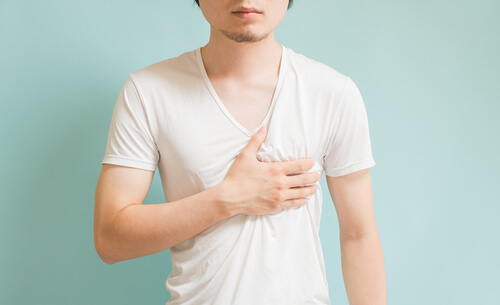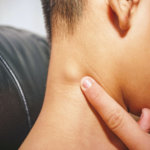
2. Tender Breasts and Nipples
As discussed, gynecomastia occurs primarily due to a hormone imbalance. Estrogen aromatizes in the body via the liver. When circulating estrogen levels are more significant than the livers capacity to aromatize, gynecomastia forms as a result.
You’ll be able to notice the rise in estrogenic and aromatase activity, as the imbalance creates sensitivity around the nipples and lower chest. The pressure from touching the nipple may result in discomfort or slight pain. It’s important not to disturb the gynecomastia, as irritating the mammary gland may lead to faster tissue growth.
Gynecomastia can develop in one or both breasts, with varying degrees of swelling and tissue growth. It’s common for teenage boys experiencing the onset of “breast-buds,” to feel intense irritation and pain. However, the condition subsides in around 6 to 18-months and is nothing to be concerned with at this stage of development.
If you discover any severe pain or discomfort while examining your nipples or breast, arrange an appointment with your physician immediately for a diagnosis.


